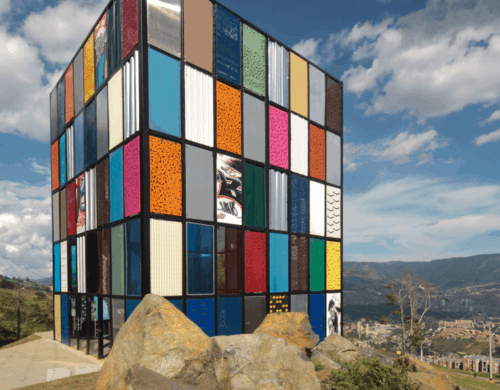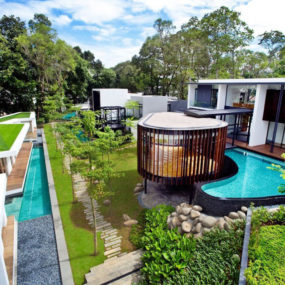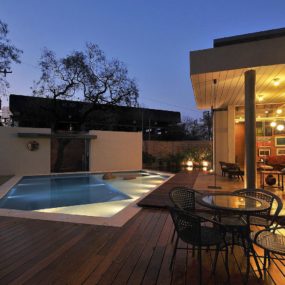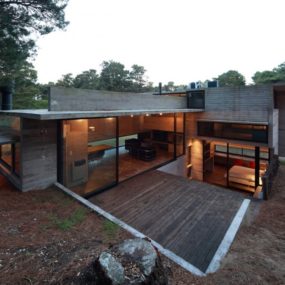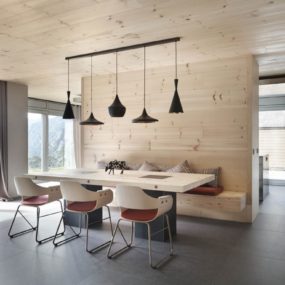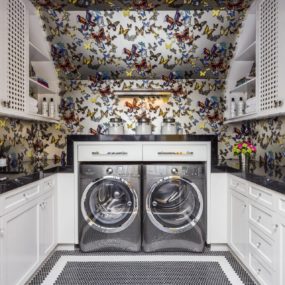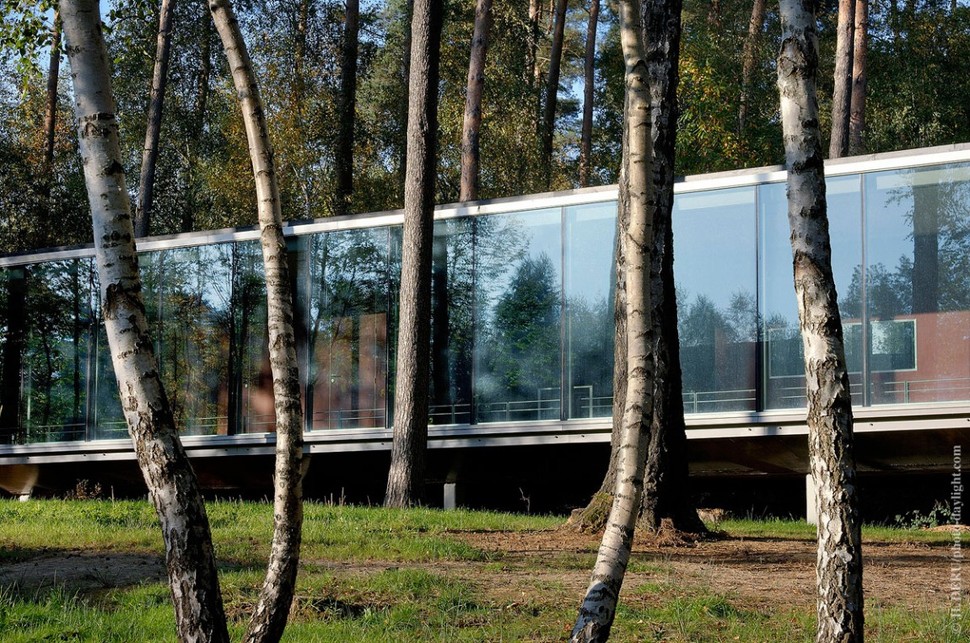
Though this is not exactly a residential design, it’s a great example of how a beautiful forest home can be constructed, to be in harmony with nature and to get the most of the forest views. Located in a pine tree forest in Ottignies, Belgium, this project is dedicated to people with low physical mobility. Belgian firm Artau Architecture conceived this place as a glass box that gets completely lost among the tall trees that it mirrors in its windows. Accessible by a long and winding wooden bridge, the pavilion sits on stilts, half a meter above the ground. This way there is a minimum impact to the site, and the building integrates into nature rather than dominate it. The shape of the house is a rectangular box, with all the vertical sides in glass on a metallic frame. The two extremities of the box are open, creating symmetrical covered terraces. Inside the space is open, favoring the easy circulation of people in wheelchairs. Nature can be contemplated through the big glazed wall from every point of the house. The very tall pine trees actually give a very good idea of the scale between man and nature, where nature is great and overwhelming and man is little and less significant. Inside the glass box there are smaller boxes in red plywood, enclosing the toilets and the educators’ offices.
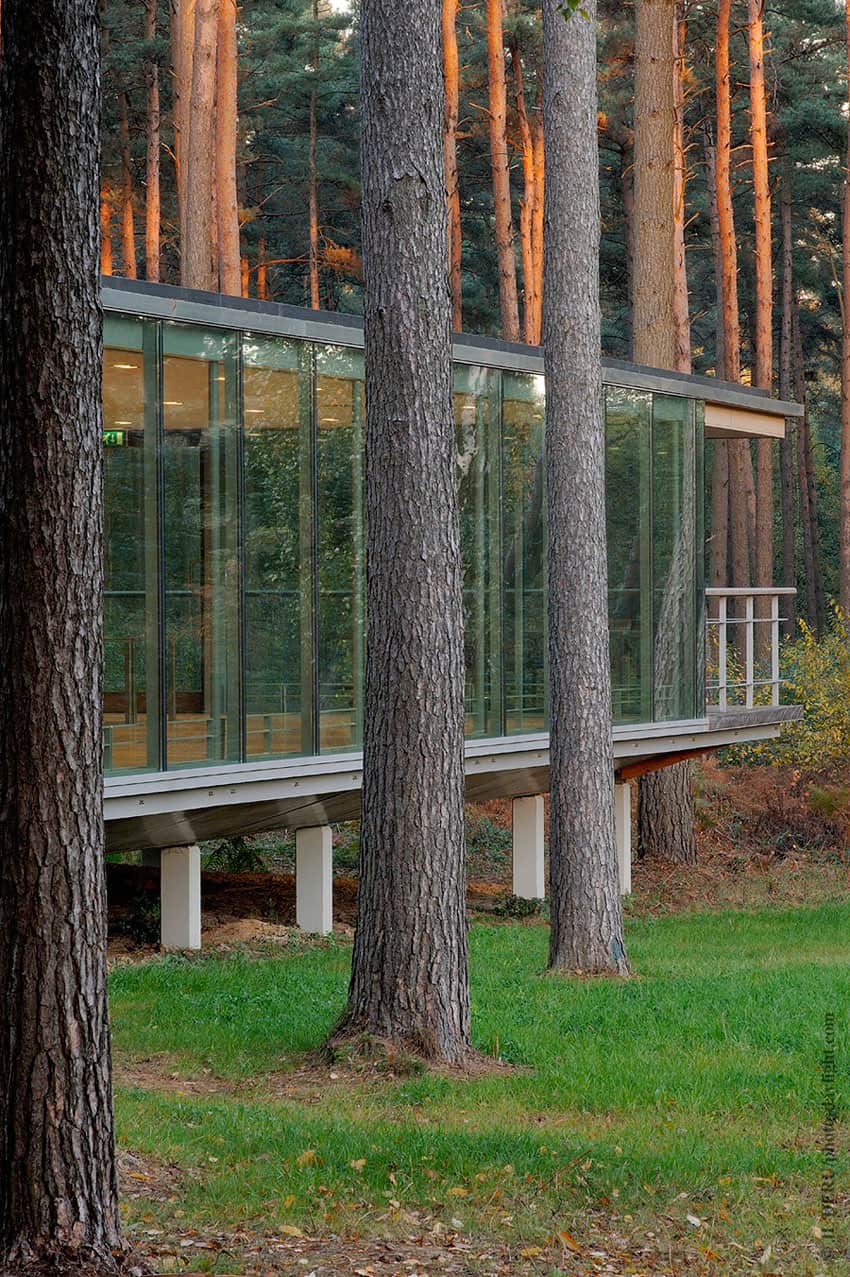
The vertical structures of the supporting pillars and of the metallic frame have the same rhythm like the tall trees, creating harmony between building and nature.
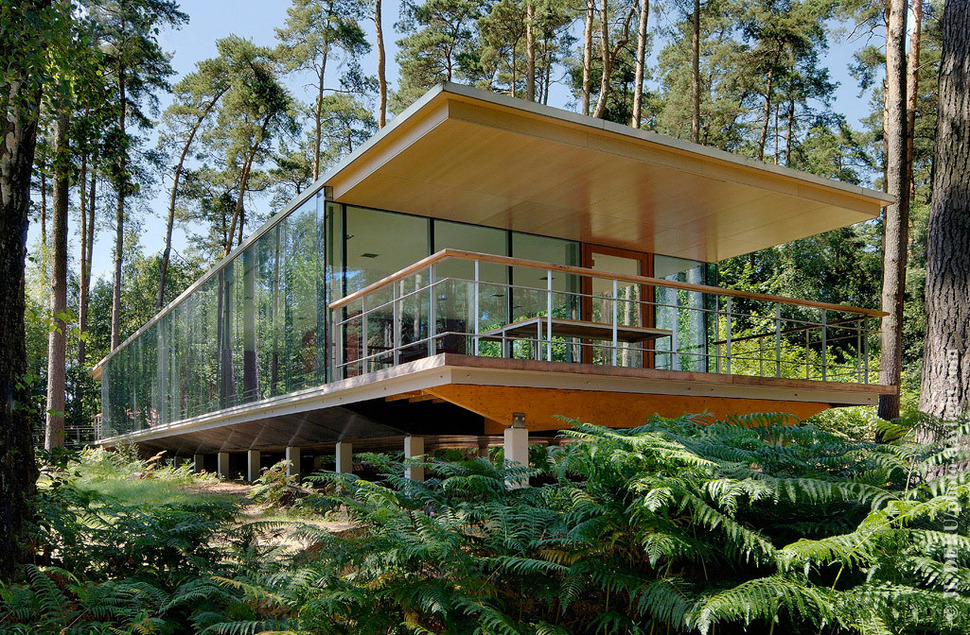
The vegetation is mirrored in the glass walls on all sides, thus camouflaging the house completely.

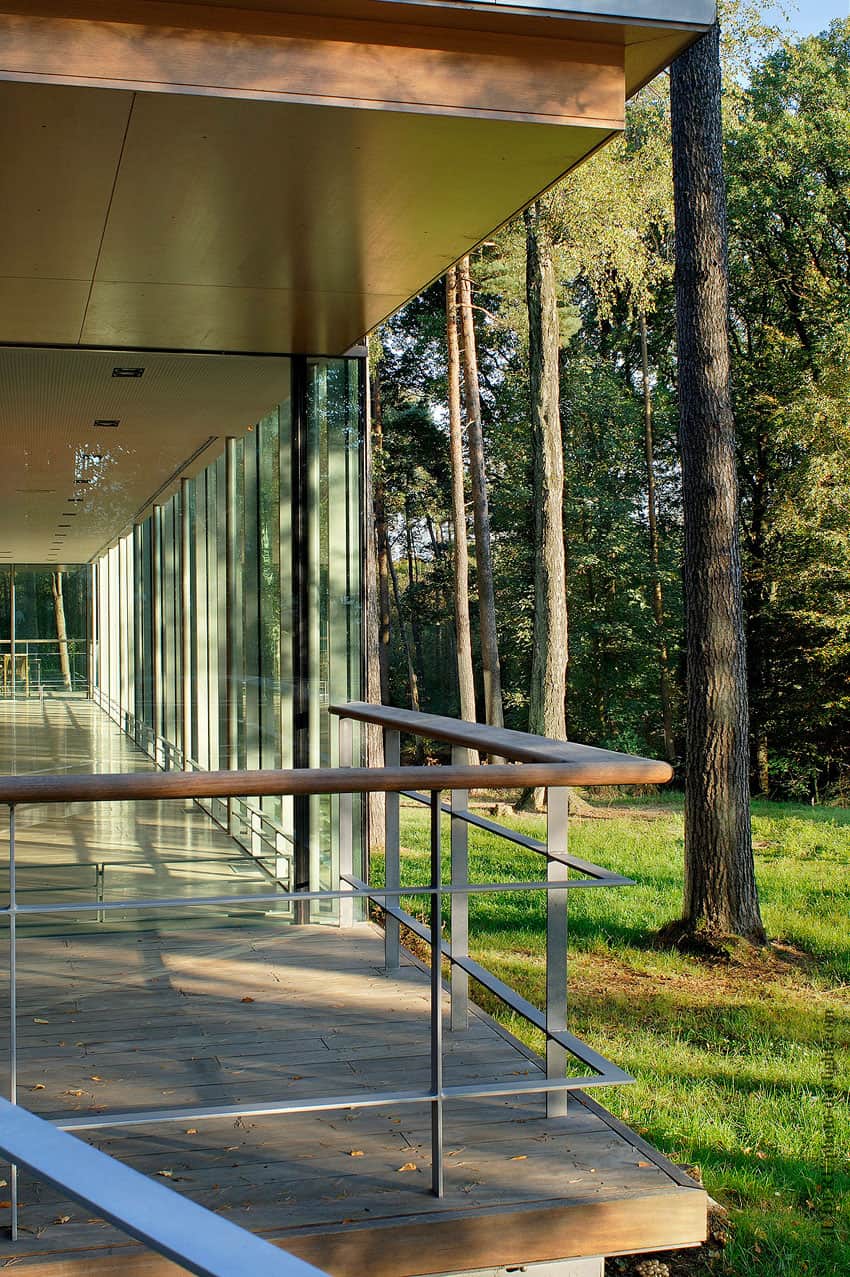
The structure is completely see-through from many angles.
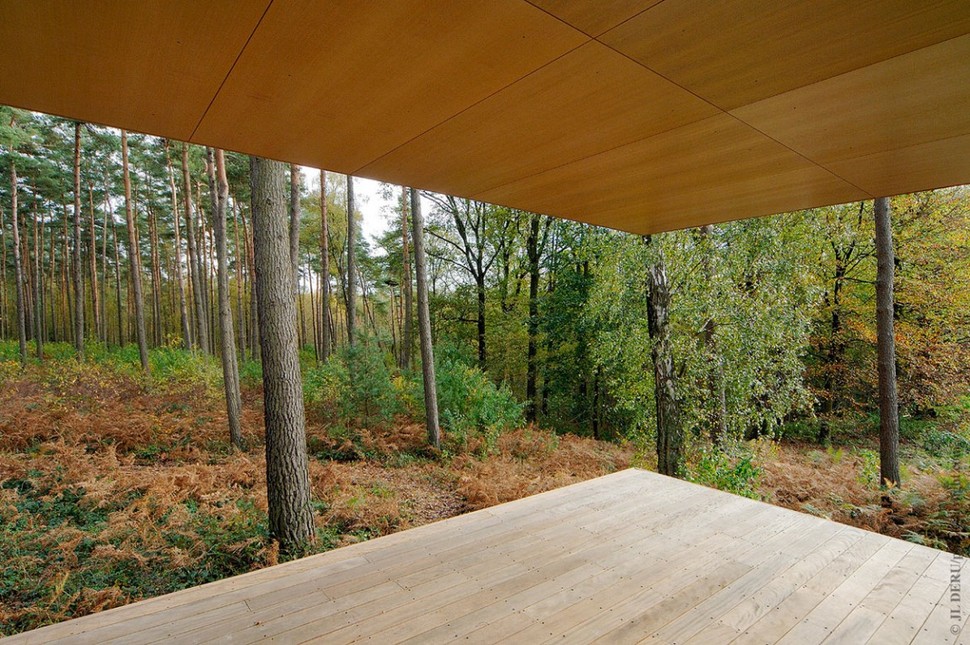
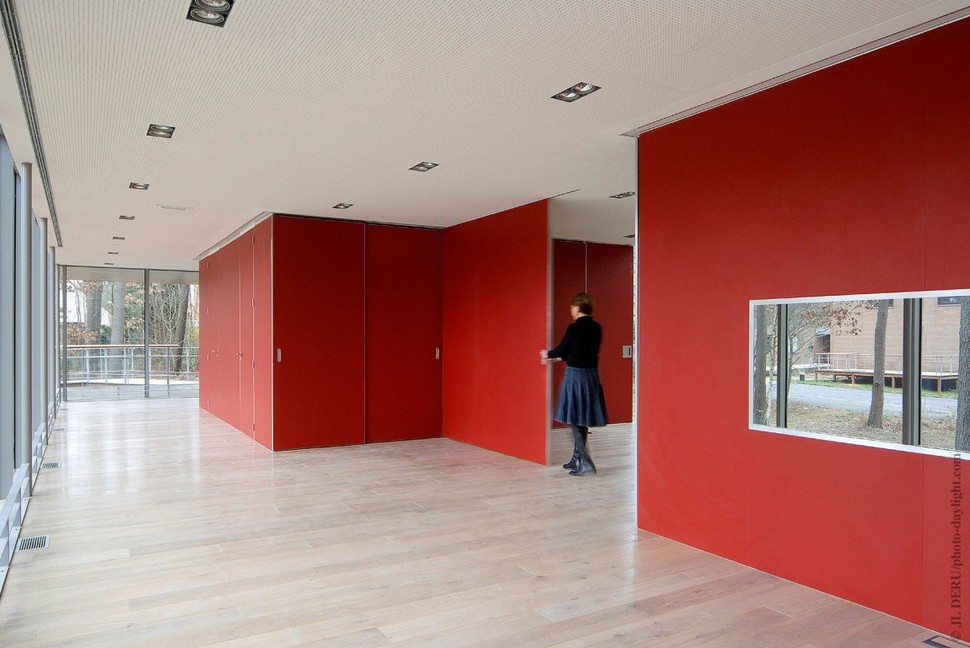
Boxes in a box, the red plywood enclosures separate the few spaces that require privacy, such as the toilets and the offices.
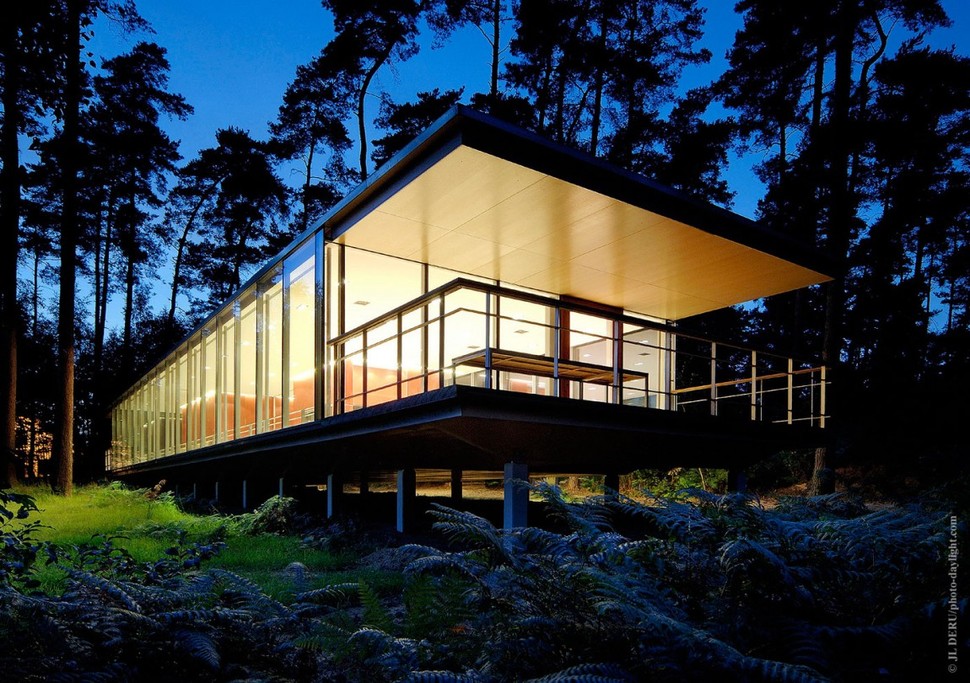
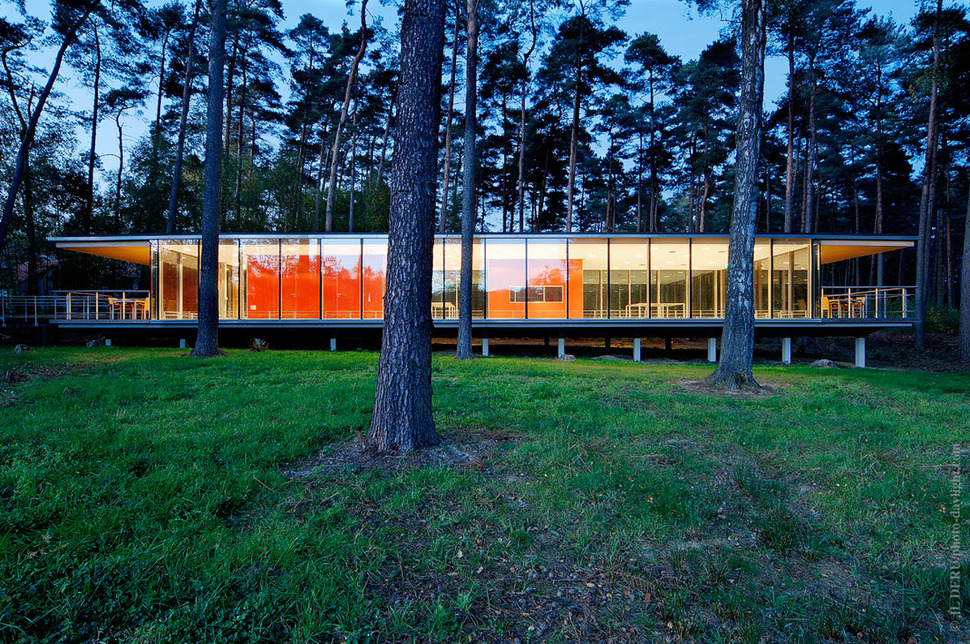
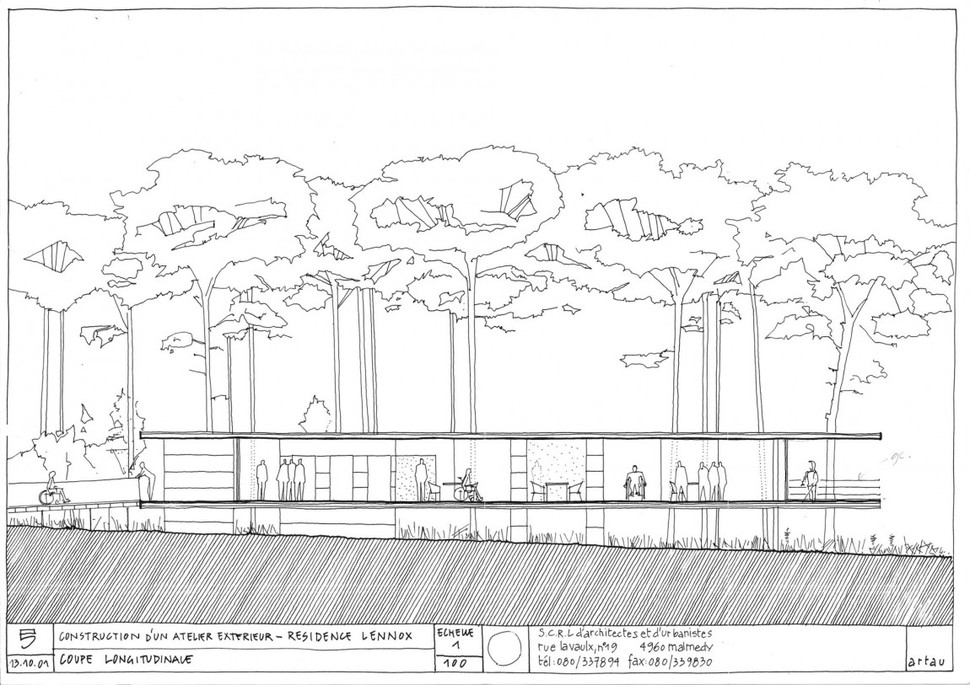
This elevation drawing shows how well the building has been integrated to the site.
